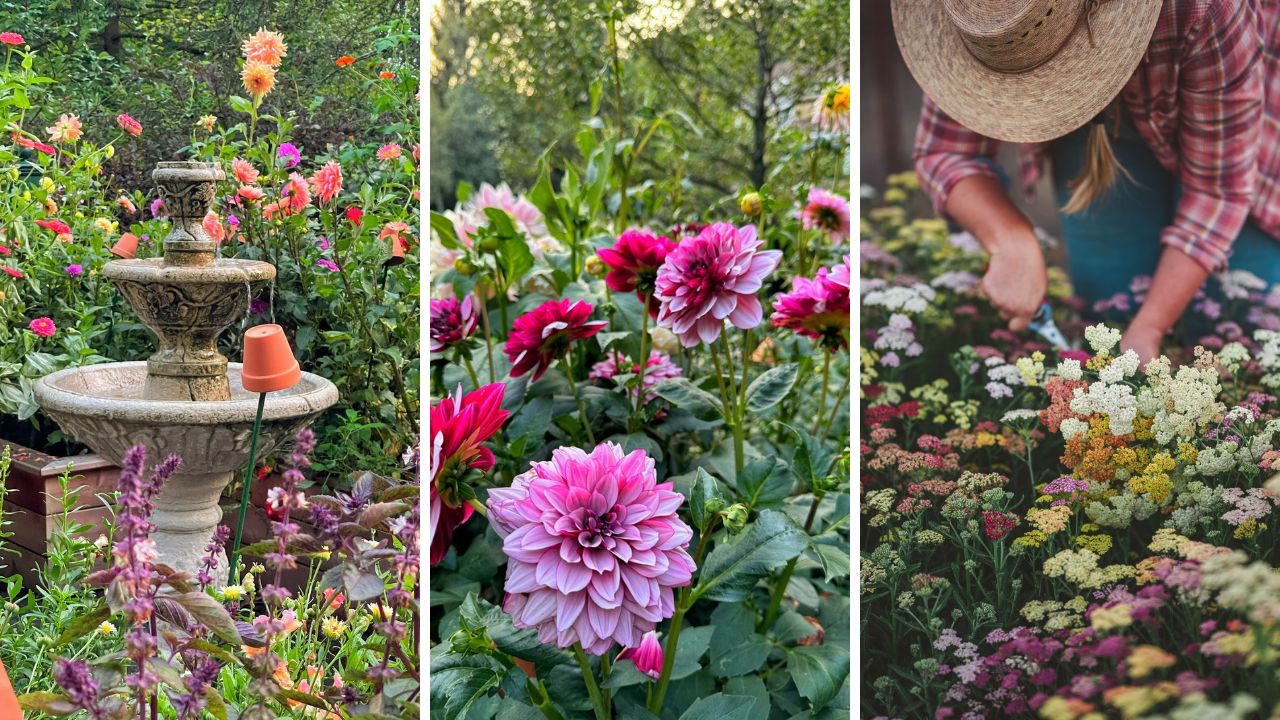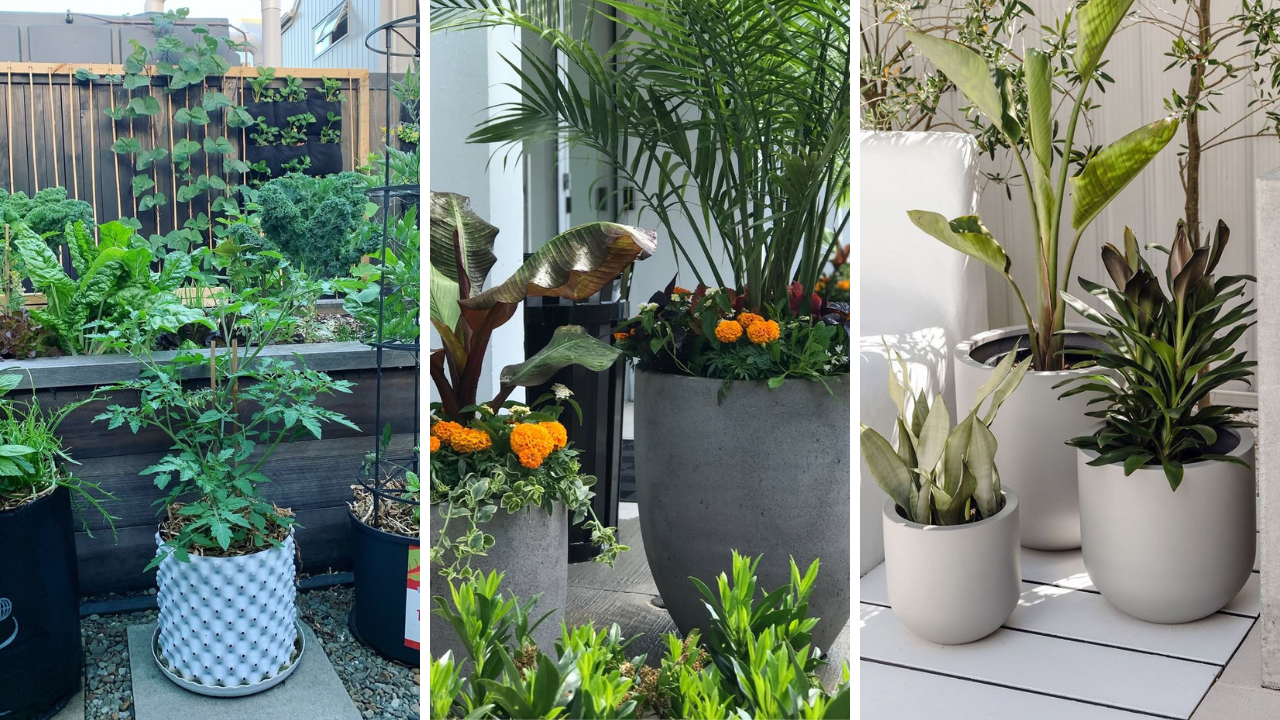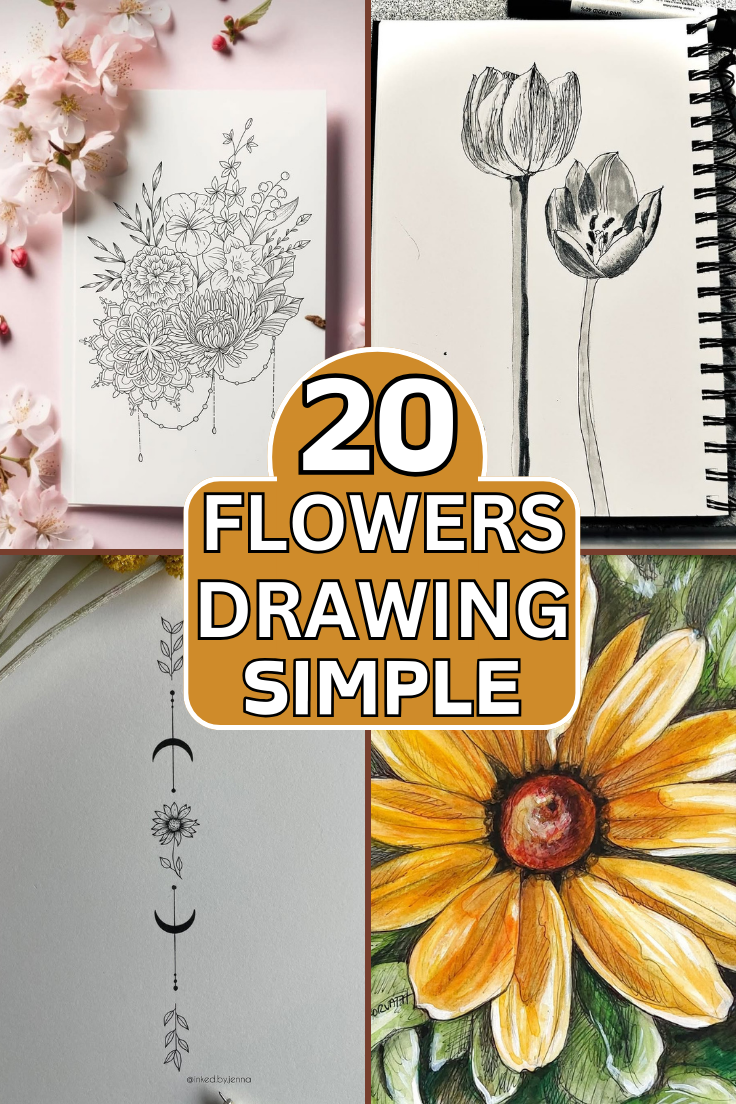
Flower drawing is a beautiful and relaxing form of artistic expression that anyone can learn, regardless of skill level. Whether you’re a beginner looking for easy floral sketches or an experienced artist searching for inspiration, mastering simple flower drawings is a great way to enhance your creativity. Flowers are among the most commonly drawn subjects in art, and their variety of shapes and forms make them exciting to sketch. From elegant roses to charming daisies, each bloom carries its own unique aesthetic, and learning to sketch them can add an extra artistic touch to your drawings, doodles, or even greeting cards. Plus, drawing flowers isn’t just for fun—it can be a therapeutic hobby, an engaging craft for kids and adults, or even a thoughtful way to create a handmade gift for a loved one. Whether you’re making custom artwork, designing personal stationery, or simply exploring a new creative skill, this guide will help you master 20 simple flower sketches in minutes. To make your drawing experience even better, we’ll also recommend must-have Amazon art supplies that will enhance your sketches and help you create stunning floral artwork effortlessly. So, grab your sketchbook and pencils, and let’s begin our journey into the world of flower drawing!
1. Simple Rose Sketch – Elegance in Every Line
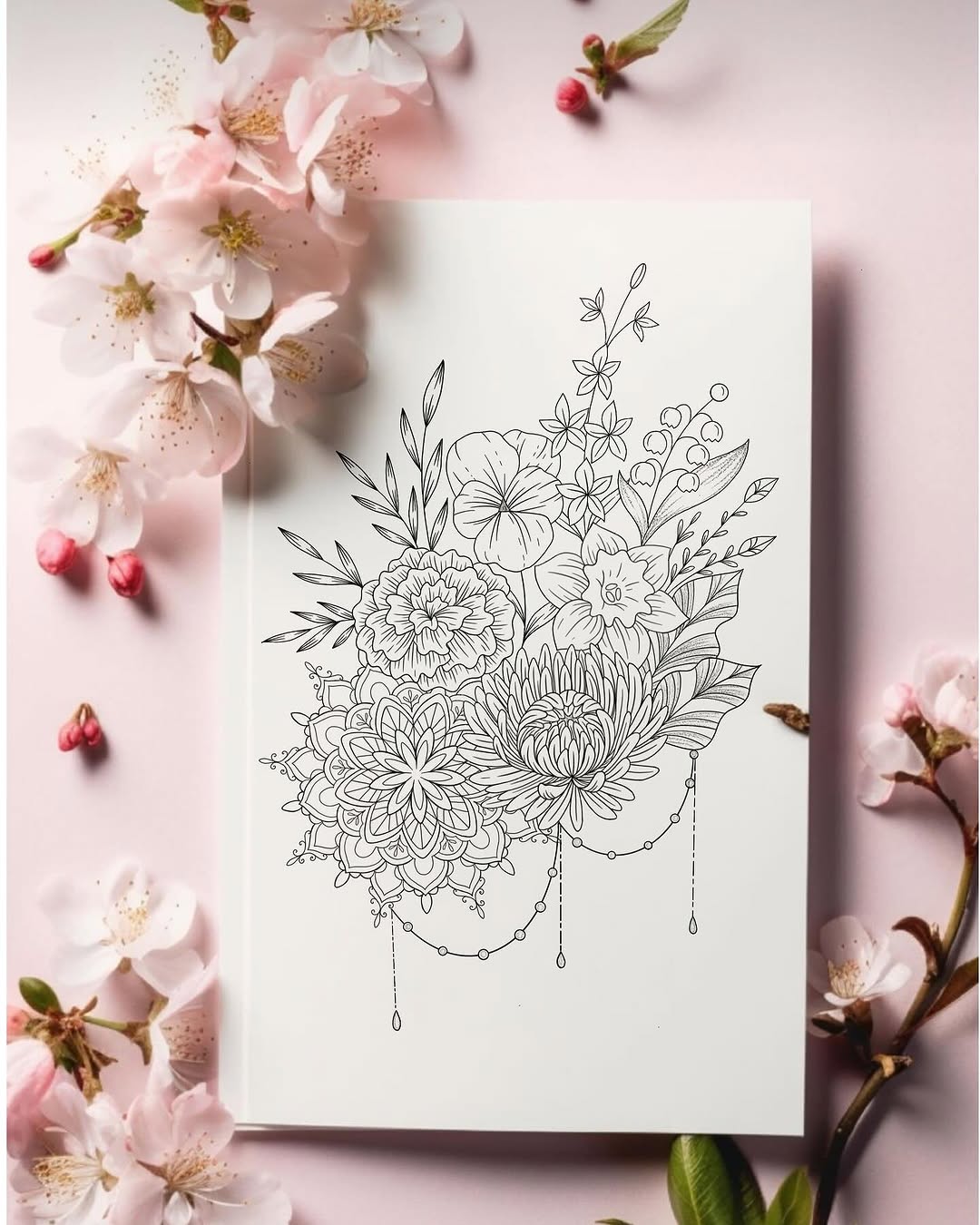
source @linebotanical
A rose is a classic and timeless flower that symbolizes love and beauty. Despite its intricate appearance, drawing a simple rose can be done with a few easy steps. Begin by sketching a small spiral at the center, then build outward with curved petals that gently overlap. The key to a beautiful rose sketch is to keep the lines light and flowing, allowing the petals to naturally curve and open. Adding a few leaves and a stem will complete the drawing, giving it an elegant and realistic touch. If you want to refine your outlines, consider using fine-tip black pens for crisp and defined edges.
2. Dainty Daisy – The Easiest Flower to Sketch
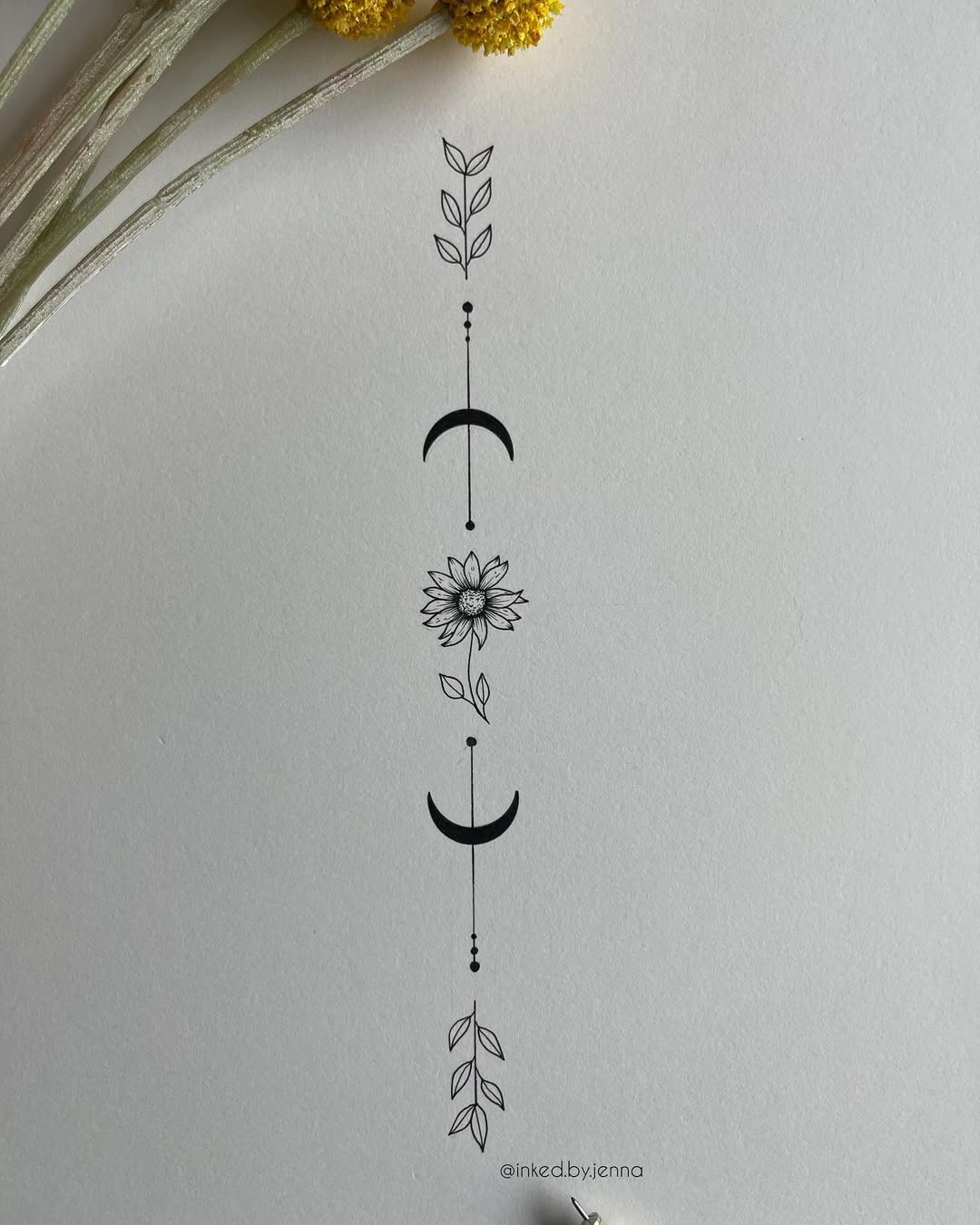
source @inked.by.jenna
The daisy is one of the easiest flowers to draw because of its simple structure. It consists of a round center and long, slightly curved petals that radiate outward. Start by drawing a small circle in the middle, then sketch the petals around it in an even, symmetrical manner. If you want to add dimension, slightly vary the shape of the petals to create a more natural appearance. This charming flower is perfect for beginners and makes a lovely addition to floral-themed sketches, journals, or DIY greeting cards.
3. Lovely Tulip – A Graceful Blossom in a Few Strokes
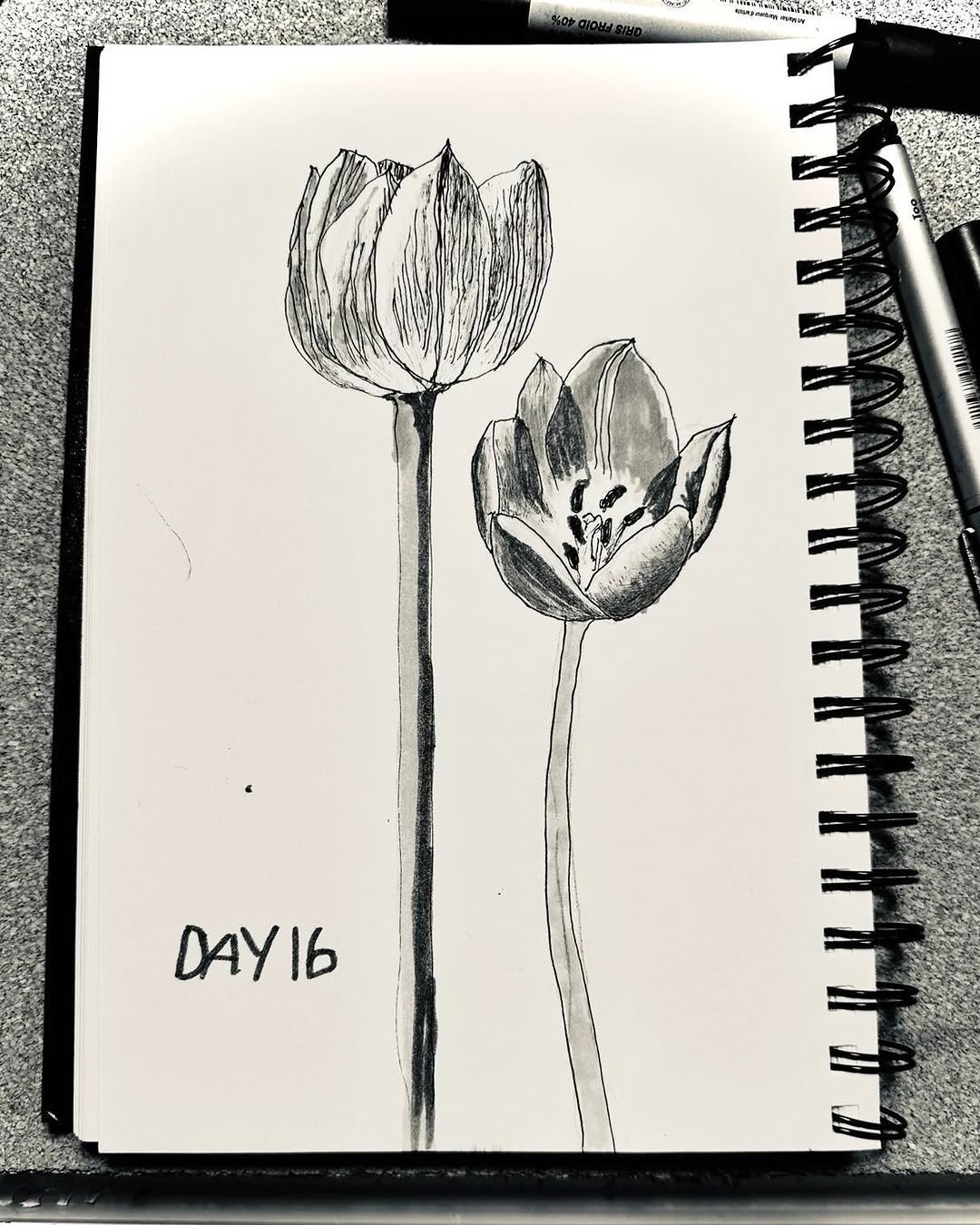
source @susanmortensenart
Tulips are graceful and minimalist flowers that can be drawn in a matter of seconds. Their cup-like shape makes them easy to illustrate, even for those new to sketching. Start by drawing a slightly oval-shaped cup at the top, then add two curved lines extending downward for the stem. The petals should be slightly pointed and overlap subtly to create depth. Tulips are great practice for understanding how shadows and curves work in flower drawing. Using colored pencils or markers can help bring these lovely blooms to life.
4. Cute Sunflower – Bright and Bold with Simple Details
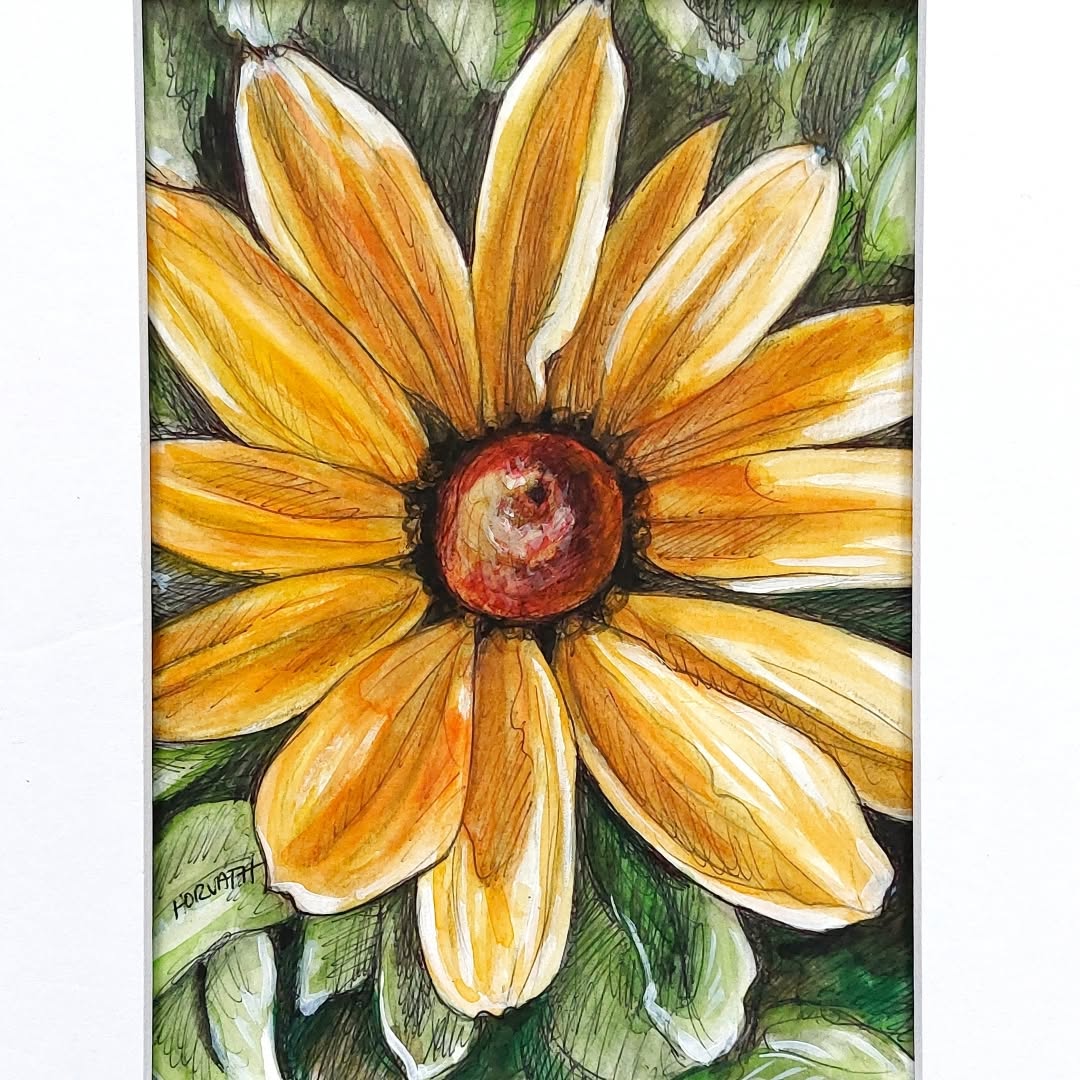
source @cathyhorvathbuchanan
The sunflower is one of the most cheerful flowers you can sketch, and its round face makes it incredibly easy to draw. Start with a large central circle, which represents the seed-filled core, then draw long, slightly curved petals around it. To add realism, slightly overlap the petals and vary their lengths. The stem should be bold and slightly curved, supporting the flower’s weight. For added detail, tiny dots inside the central circle can mimic sunflower seeds, giving your drawing a more textured look. Using yellow and brown colored pencils will make your sunflower pop on paper.
5. Elegant Lily – A Touch of Sophistication
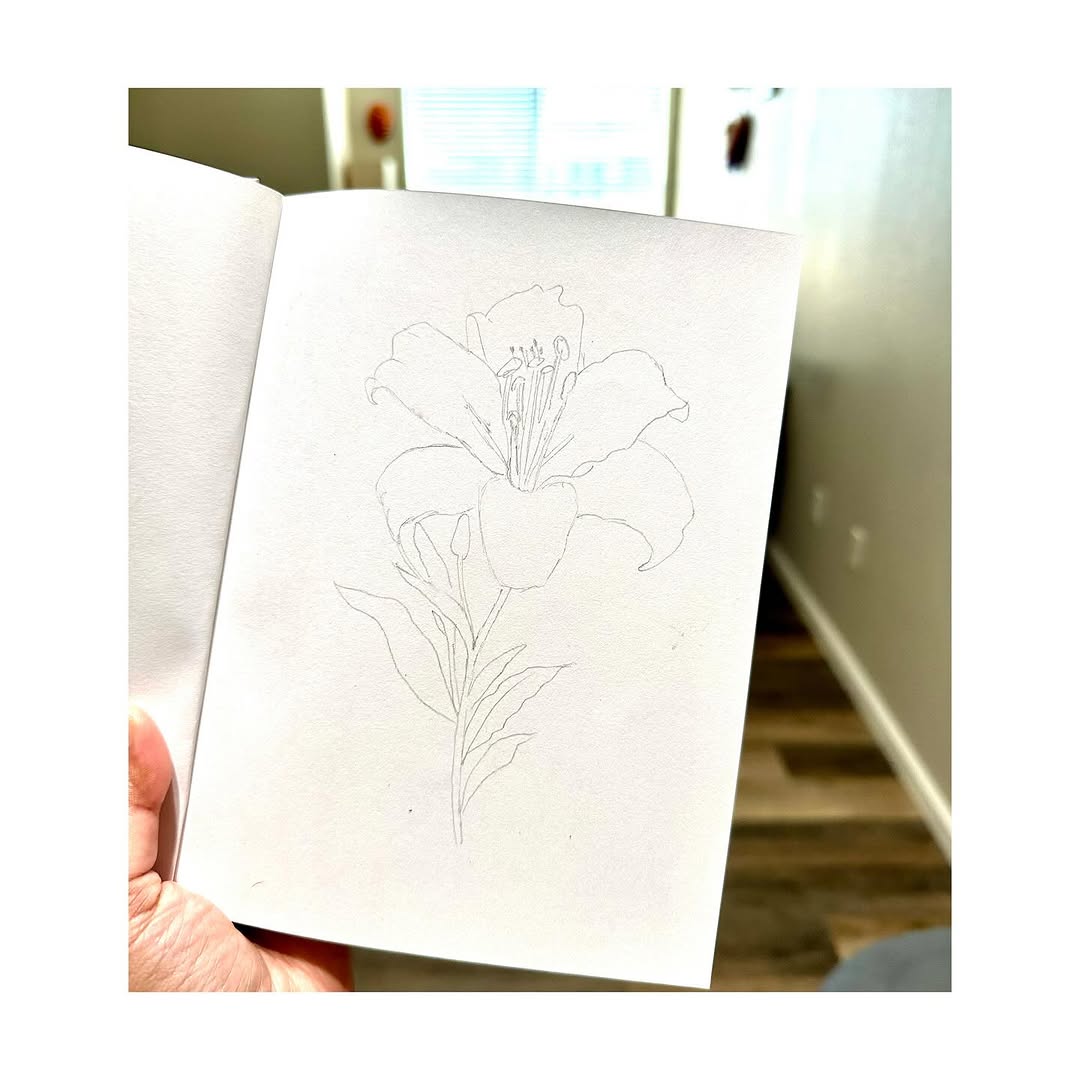
source @thebrewingarts
Lilies are known for their graceful trumpet-like petals, and despite their seemingly complex form, they can be drawn with just a few curved lines. Start with a small oval center, then draw five or six curved, elongated petals extending outward. These petals should slightly overlap, creating a sense of depth. Adding long, elegant stamens in the center gives your lily sketch a natural and sophisticated appearance. Lilies make great floral designs for greeting cards, home decor sketches, or tattoo concepts.
6. Pretty Cherry Blossoms – Delicate and Dreamy
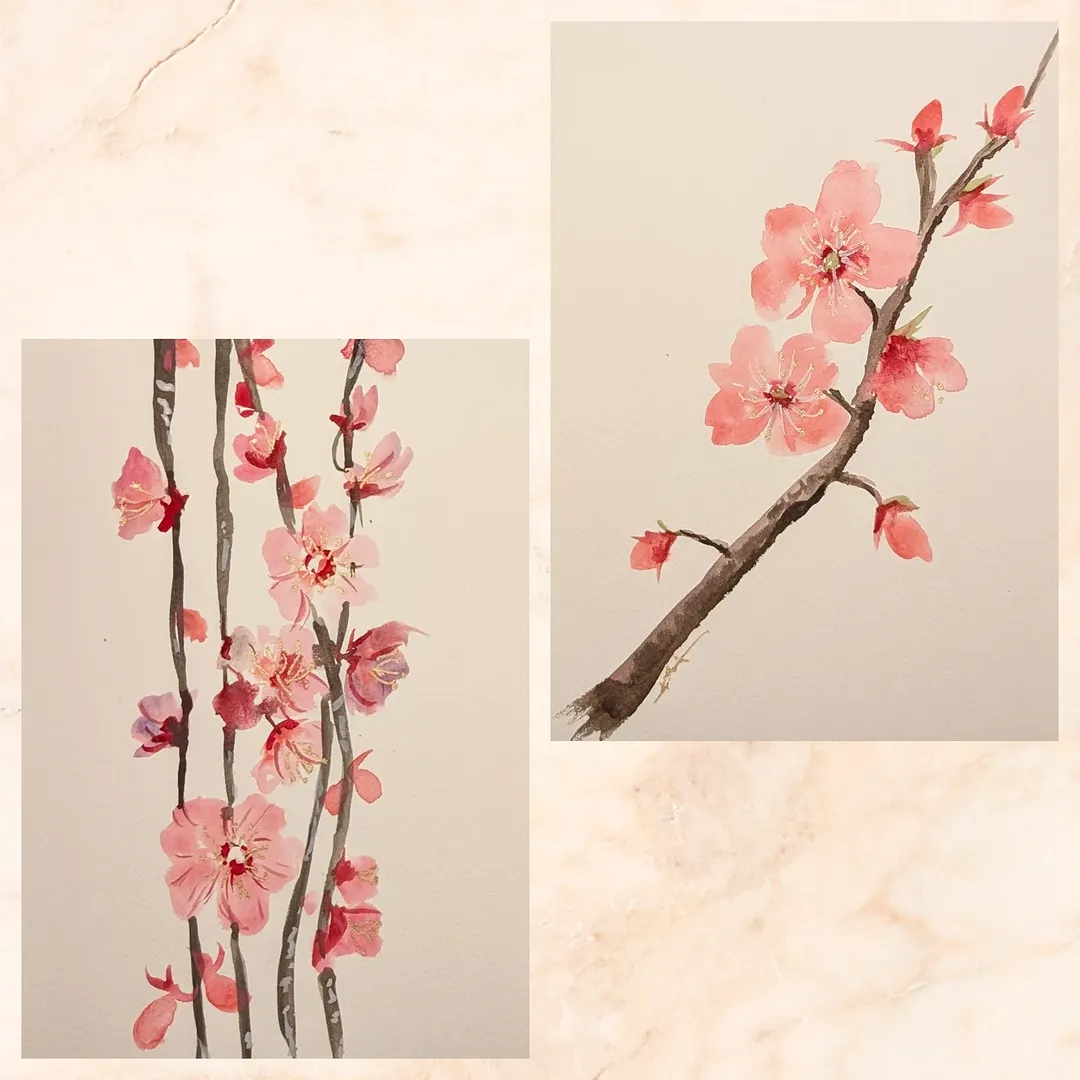
source @karenalissaart
Cherry blossoms are delicate, romantic flowers that add a soft and dreamy touch to any sketch. These flowers consist of five small rounded petals that slightly curve outward. You can draw a single cherry blossom or create a beautiful branch full of blooms. Adding tiny dots and thin lines in the center of each blossom enhances their realism. If you want to create an aesthetic floral journal spread, cherry blossoms are the perfect choice. Using watercolor pencils or pastels can make them look even more enchanting.
7. Vibrant Hibiscus – Tropical Charm in a Few Steps

source @theacrylicgarden
Hibiscus flowers have a large, open bloom with five gently ruffled petals surrounding a prominent central stamen. Their tropical vibe makes them a popular choice for floral sketches. To draw a hibiscus, start with a circular center, then create soft, slightly wavy petal edges that extend outward. A long stamen with tiny dots at the tip completes the flower’s signature look. Adding a few leaves and a curling vine gives it a more tropical aesthetic. If you love bold floral sketches, the hibiscus is a must-try!
8. Beautiful Poppy – A Simple Yet Artistic Choice
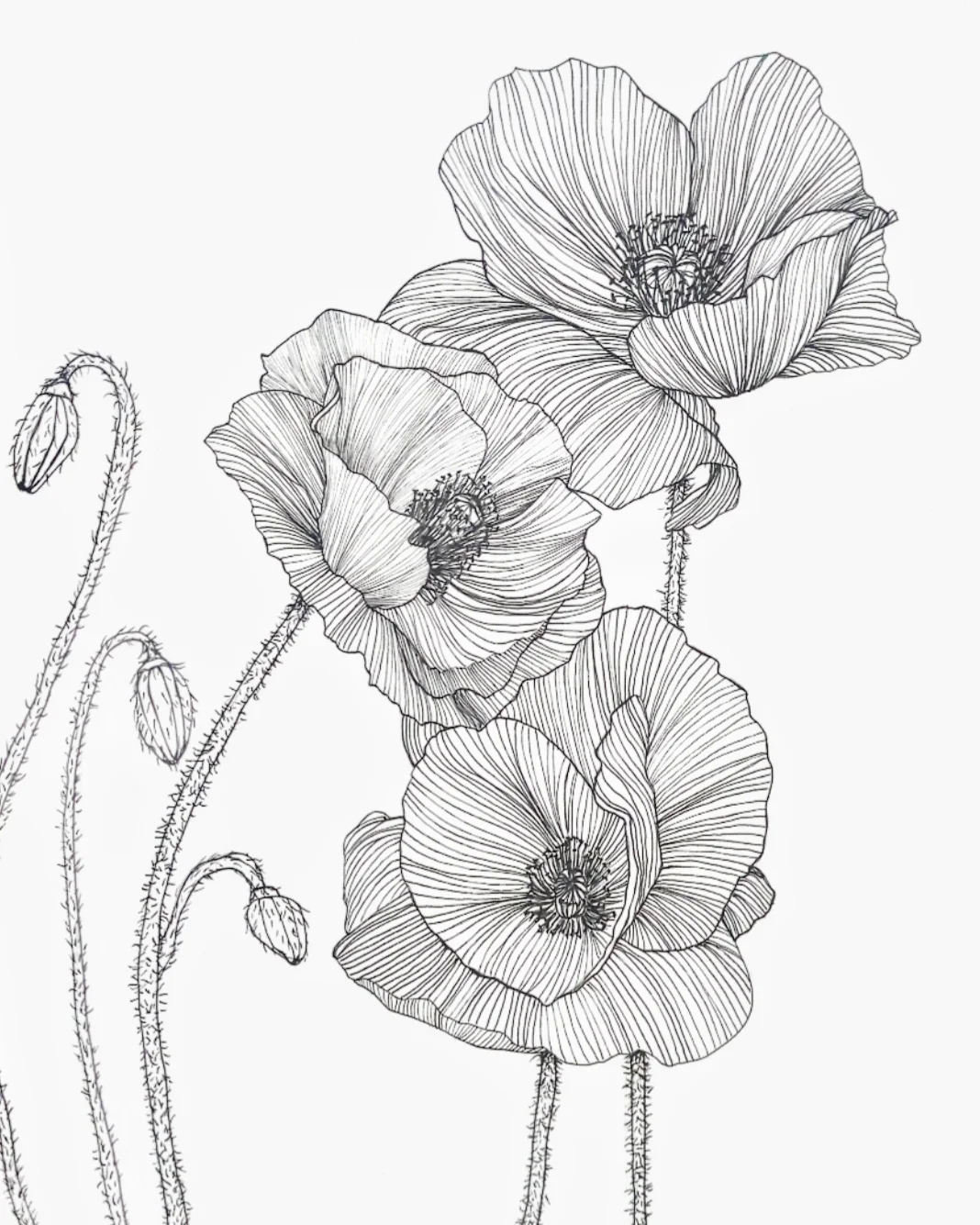
source @deniseyookongwilliams
Poppies are delicate, paper-thin flowers that look graceful and artistic when sketched. They have thin, slightly crinkled petals, making them unique among floral drawings. Start with a simple rounded shape for the bloom, then add slightly overlapping petals. The center of the poppy is often darker, making it a great flower for experimenting with shading. Poppies are perfect for monochrome floral art or as an addition to sketchbook compositions.
9. Easy Dandelion Sketch – A Whimsical Floral Touch
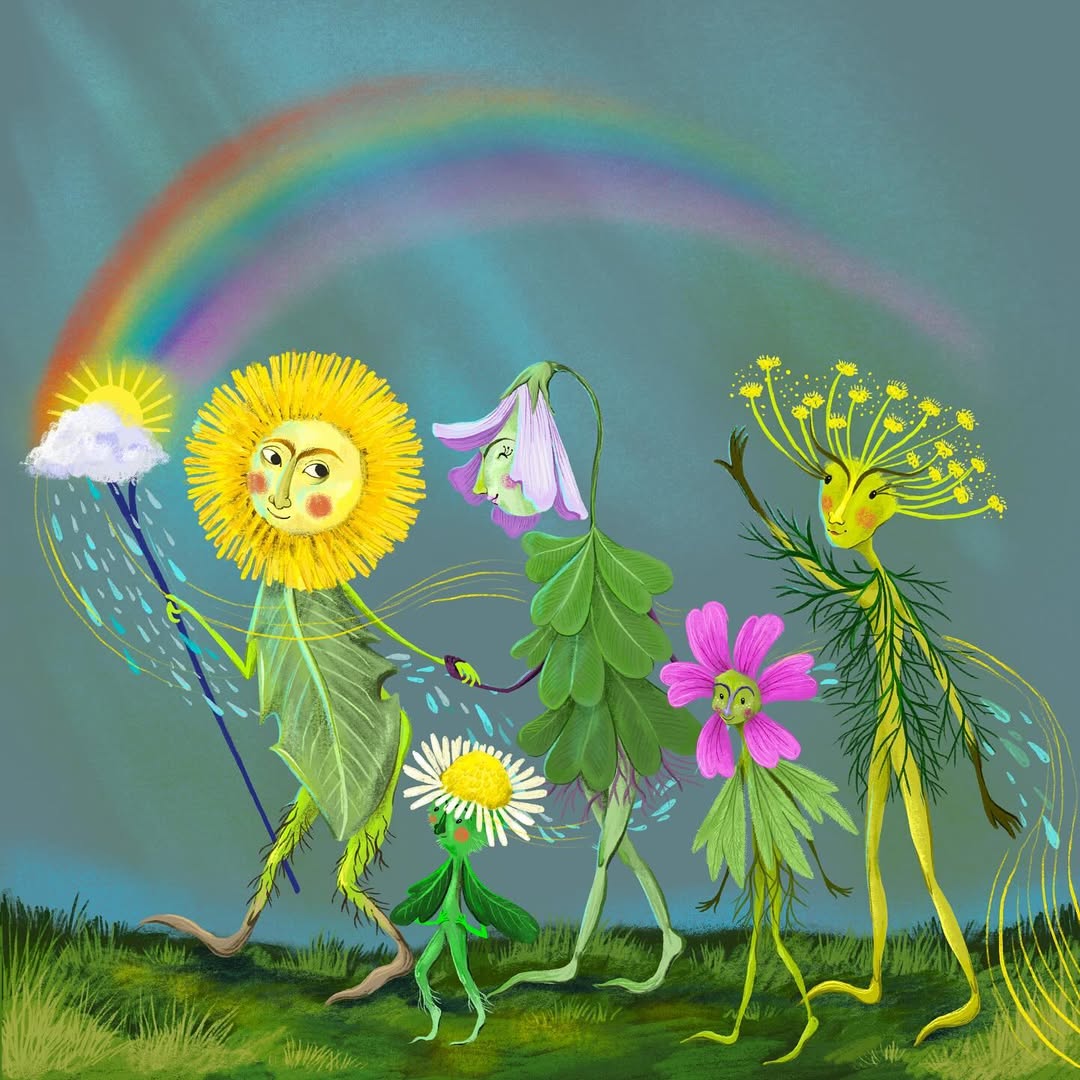
source @annaseedart
Dandelions are known for their light, fluffy seed heads, and they’re surprisingly easy to draw. Start with a small central circle, then add thin lines radiating outward with tiny dots at the tips to represent the seeds. You can also draw a few floating seeds drifting in the wind for a dynamic effect. Dandelions make wonderful doodle-style illustrations and look beautiful in minimalist floral sketches.
10. Lavender Sprigs – A Simple and Relaxing Drawing
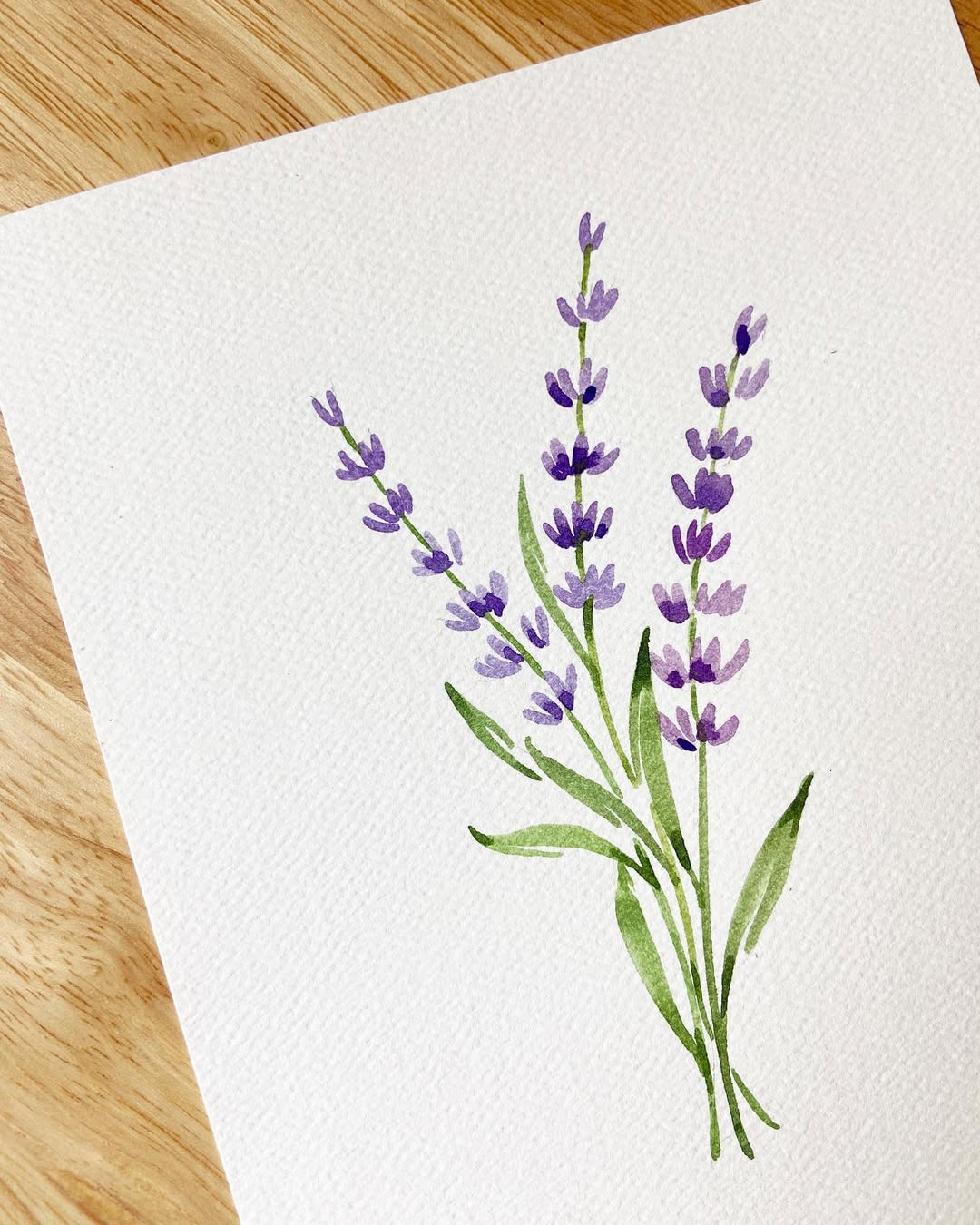
source @carrieandthebrush
Lavender flowers are known for their slender stems and tiny clustered blossoms, making them a perfect choice for beginners and botanical art lovers alike. To draw lavender, start with a gently curved line for the stem, then add small oval-shaped buds arranged in a staggered pattern along the top portion. The beauty of lavender lies in its simplicity—keeping your strokes light and delicate will give your drawing an airy, natural feel. This flower is ideal for floral-themed journal designs, botanical sketches, or even tattoo inspiration. If you’d like to add color, soft purples and greens will make your lavender drawing stand out beautifully.
11. Cheerful Marigold – A Vibrant and Layered Sketch
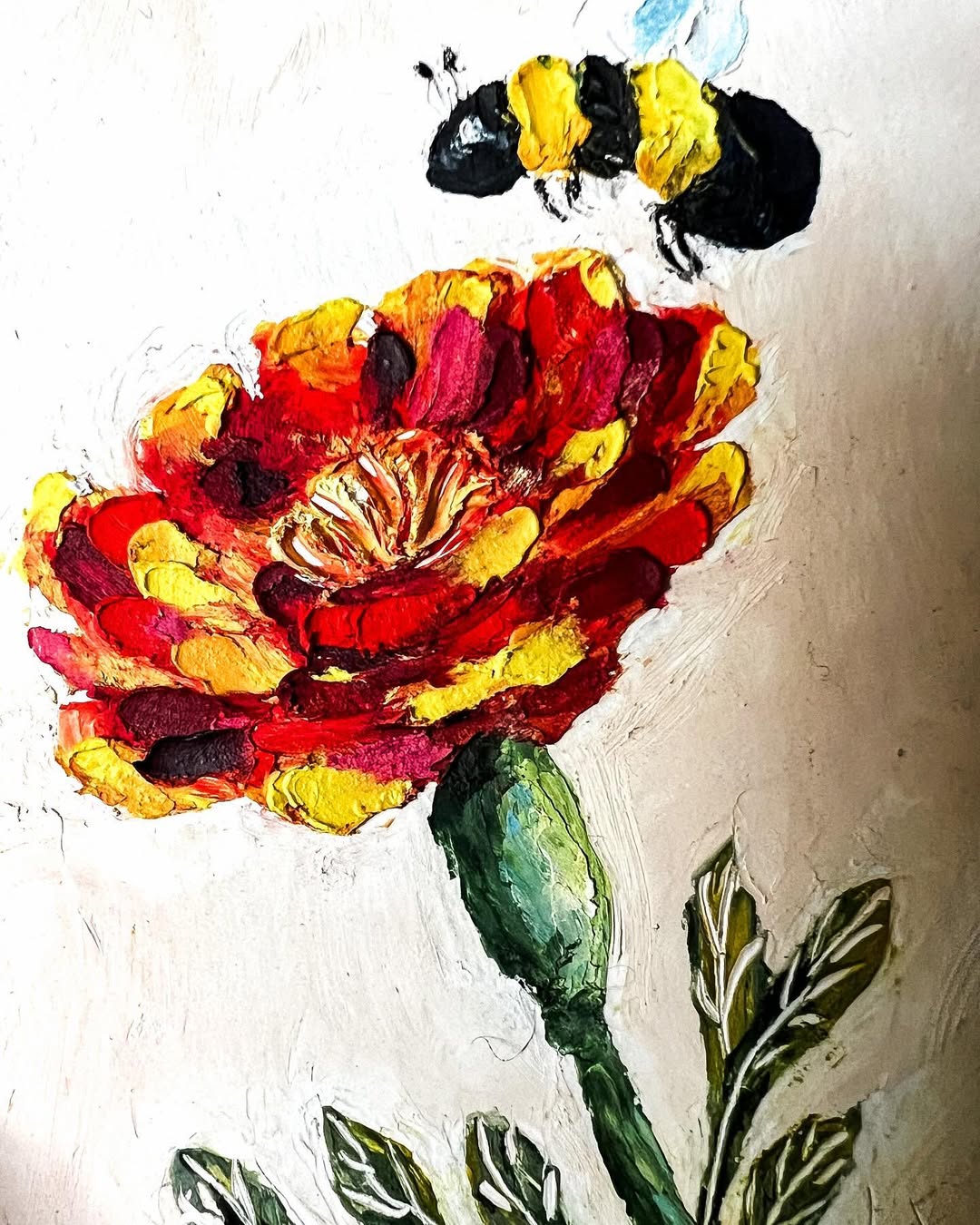
source @artbythemeadows
Marigolds are round, full flowers with layers of petite, ruffled petals, giving them a distinct fluffy appearance. To sketch a marigold, start with a small circular center, then build layers of overlapping, wavy petals around it. Adding a slightly curved stem and leaves will make your drawing look complete. The secret to an impressive marigold sketch is creating depth with multiple layers of petals, so take your time shaping them with soft curves. These flowers are perfect for sketchbook designs, greeting card embellishments, or coloring projects.
12. Hydrangea Blossoms – A Beautiful Cluster of Petals
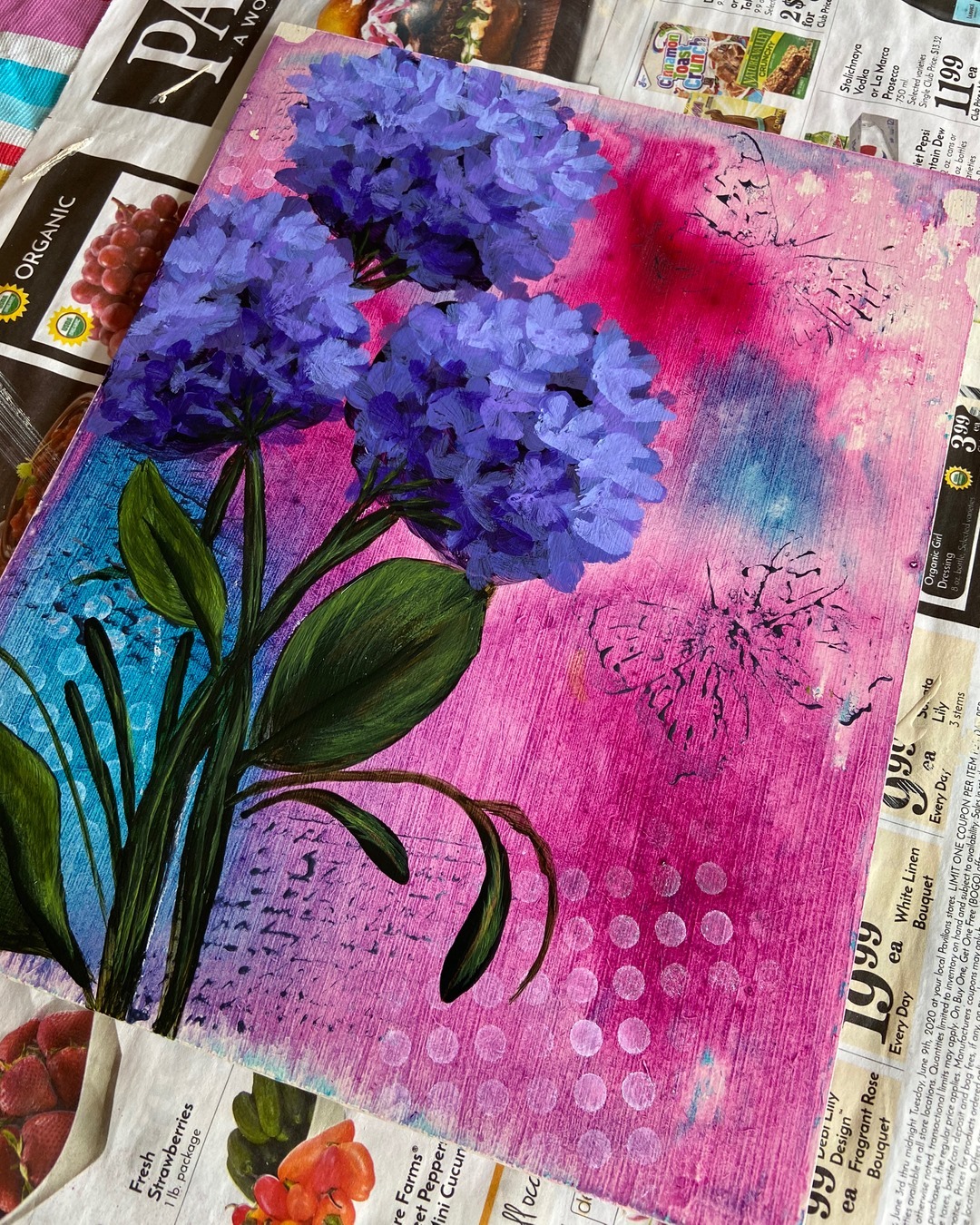
source @theacrylicgarden
Hydrangeas are voluminous flowers made up of clusters of tiny blossoms, creating a lush, full shape. Though they might seem tricky, they can be drawn with a few simple steps. Start with a rounded outline for the overall shape, then fill it with small four-petaled flowers closely packed together. To keep your drawing light and natural, use soft strokes for the petals and slightly overlap them to mimic the fluffy texture of real hydrangeas. Hydrangeas are wonderful for delicate floral illustrations, greeting cards, or watercolor sketches. If you want to add depth, shading a few petals lightly will enhance the volume.
13. Bellflower – A Graceful Hanging Bloom
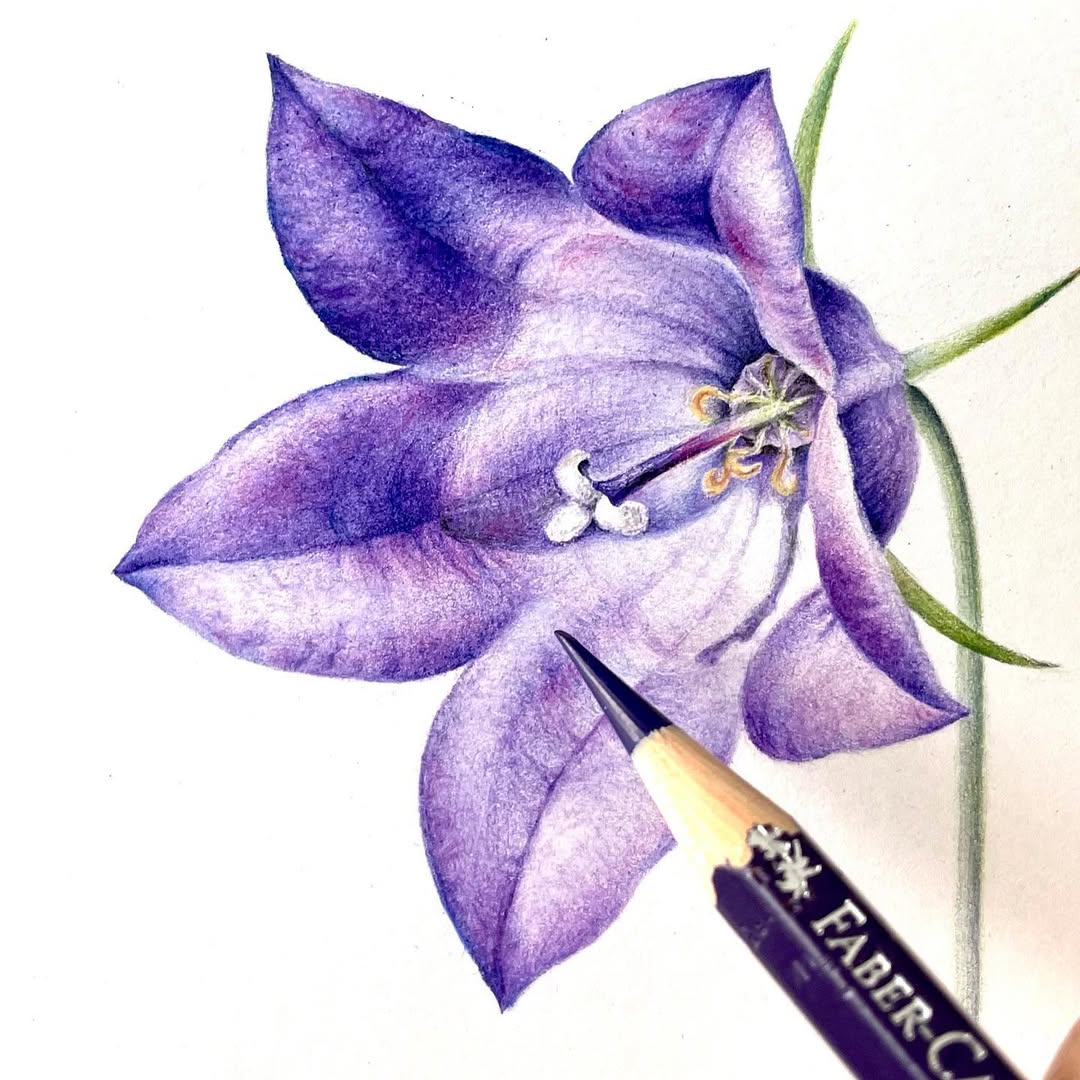
source @crystalflorafossil
Bellflowers are delicate, star-shaped flowers that typically hang downward, giving them an elegant appearance. Their graceful, curved petals and slim stems make them a wonderful choice for minimalist floral art. To draw a bellflower, start with a small, bell-shaped outline, then add slightly curled petals to create softness. A curved stem with a few leaves will complete the look. Bellflowers are perfect for botanical illustrations or elegant floral arrangements in your sketchbook.
14. Simple Peony – A Luxurious Bloom in Soft Layers
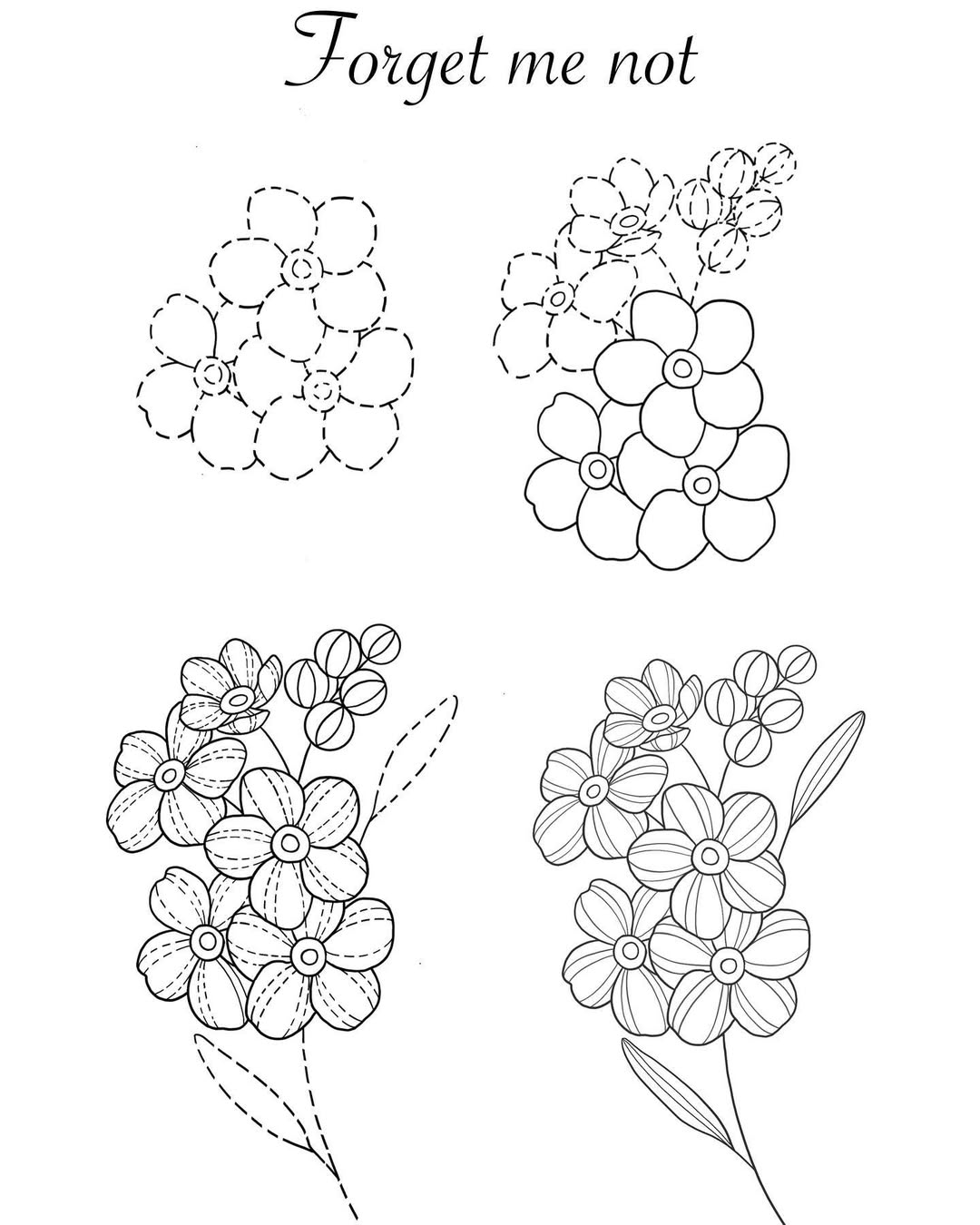
source @linebotanical
Peonies are lush and full-bodied flowers with overlapping, ruffled petals, giving them a rich and romantic feel. While they may seem complex, they can be broken down into easy steps. Start with a small, circular center, then gradually add large, wavy petals that slightly overlap. The key to drawing a beautiful peony is to layer the petals in different sizes—some large and open, others smaller and tucked inside. Peonies make stunning floral illustrations and are often used in stationery designs, wedding invitations, or decorative sketches. If you love soft and dreamy floral drawings, a peony is a must-try!
15. Carnation – A Ruffled Beauty with Elegant Detail
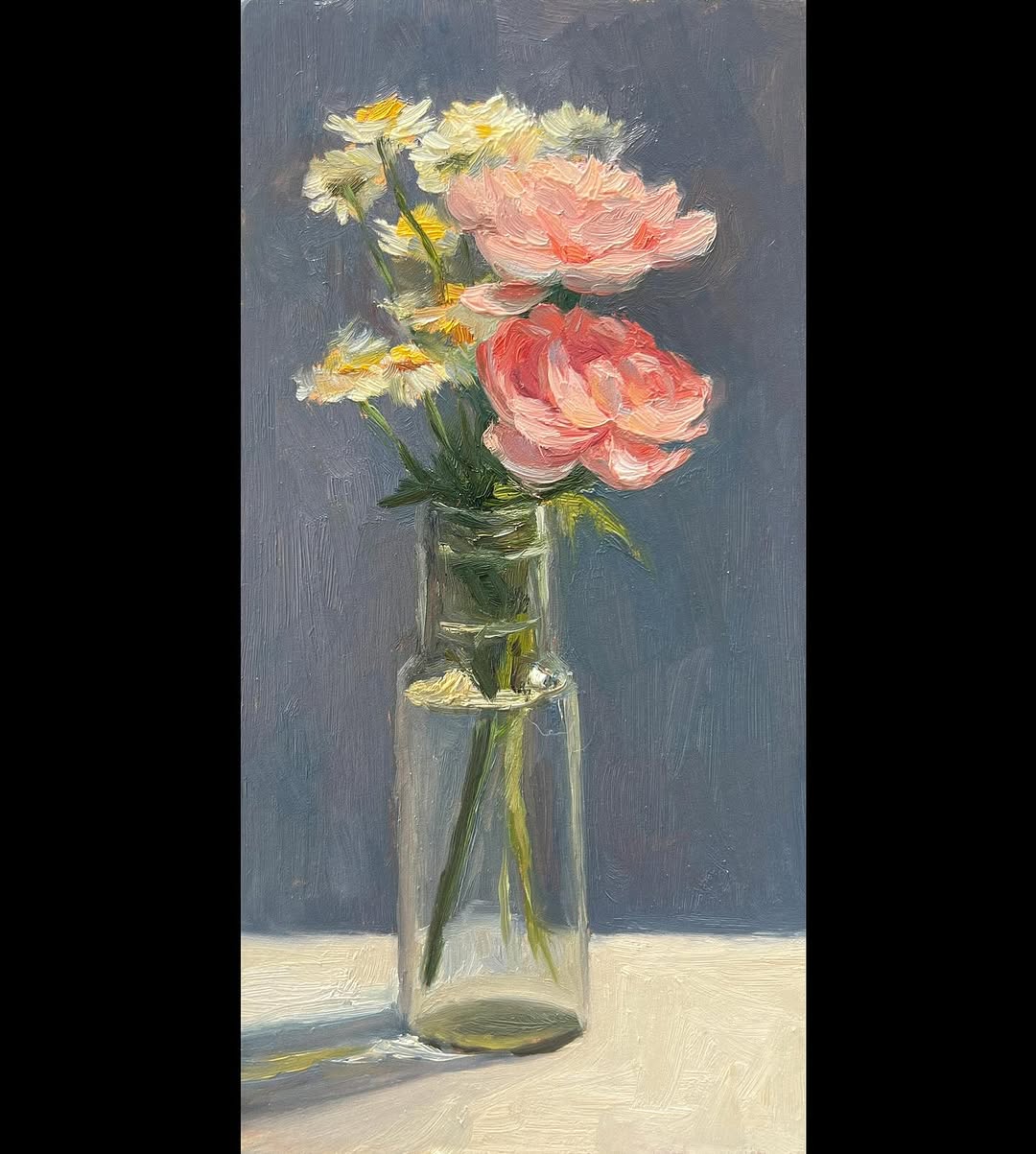
source @heatherihnart
Carnations are distinctive, frilled flowers that are perfect for practicing textured petal drawing. They have multiple layers of ruffled edges, giving them an intricate yet elegant look. To sketch a carnation, start with a wavy, irregular circular outline for the first layer of petals, then add deeper layers inside for fullness. The stem is usually slender and slightly curved, giving the flower a delicate and sophisticated posture. Carnations are great for gift cards, floral bouquets, and decorative artwork.
16. Anemone – A Striking Flower with Bold Contrast
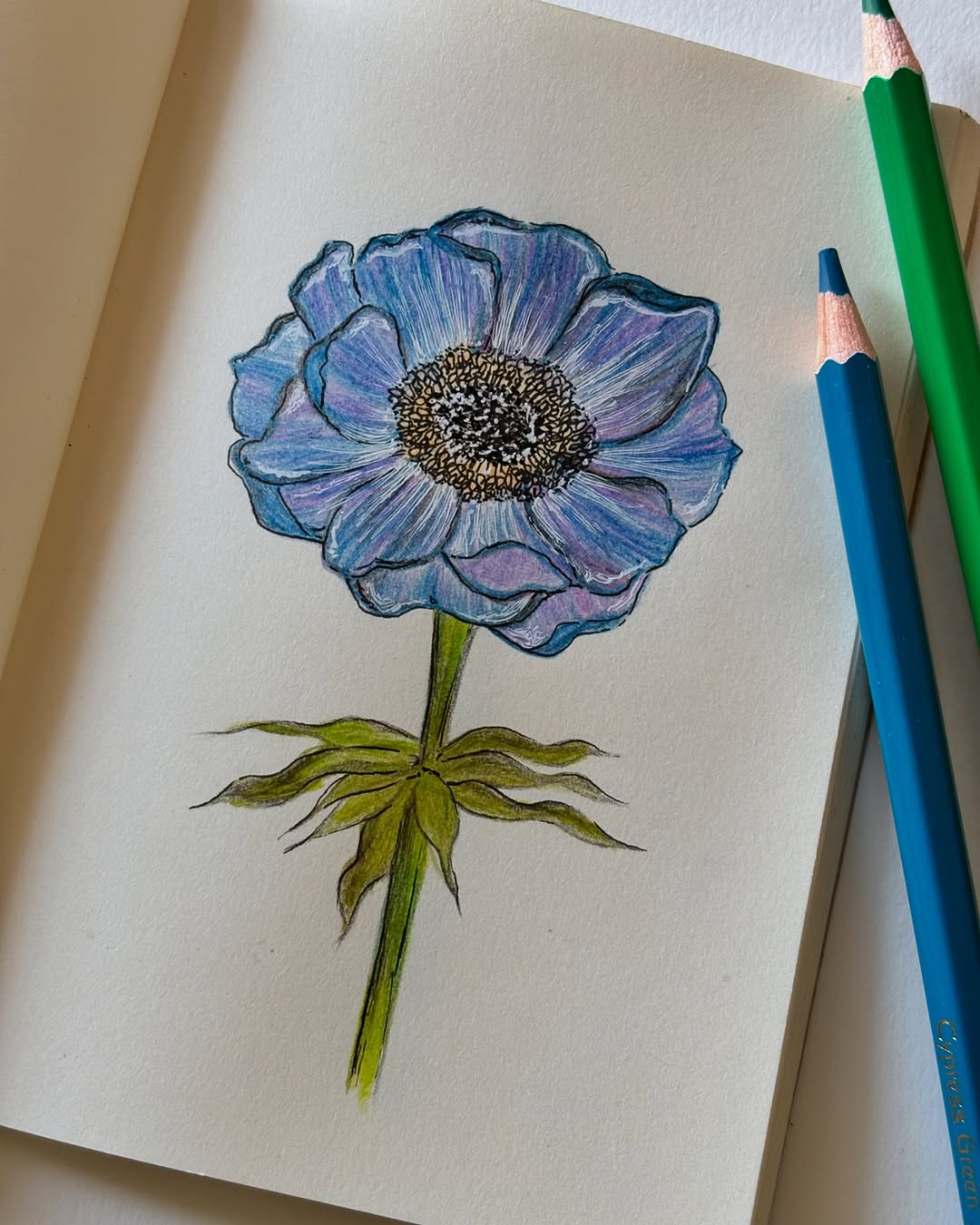
source @flowersbysi
Anemones are striking flowers with large, open petals surrounding a dark, textured center, making them a fun choice for sketching. Start with a small, circular center, then add broad, slightly curved petals extending outward. A great way to enhance an anemone sketch is by darkening the center with dots or small lines, mimicking the flower’s natural texture. These flowers are excellent for monochrome floral drawings, tattoo designs, or elegant botanical artwork.
17. Camellia – A Romantic, Rose-Like Bloom
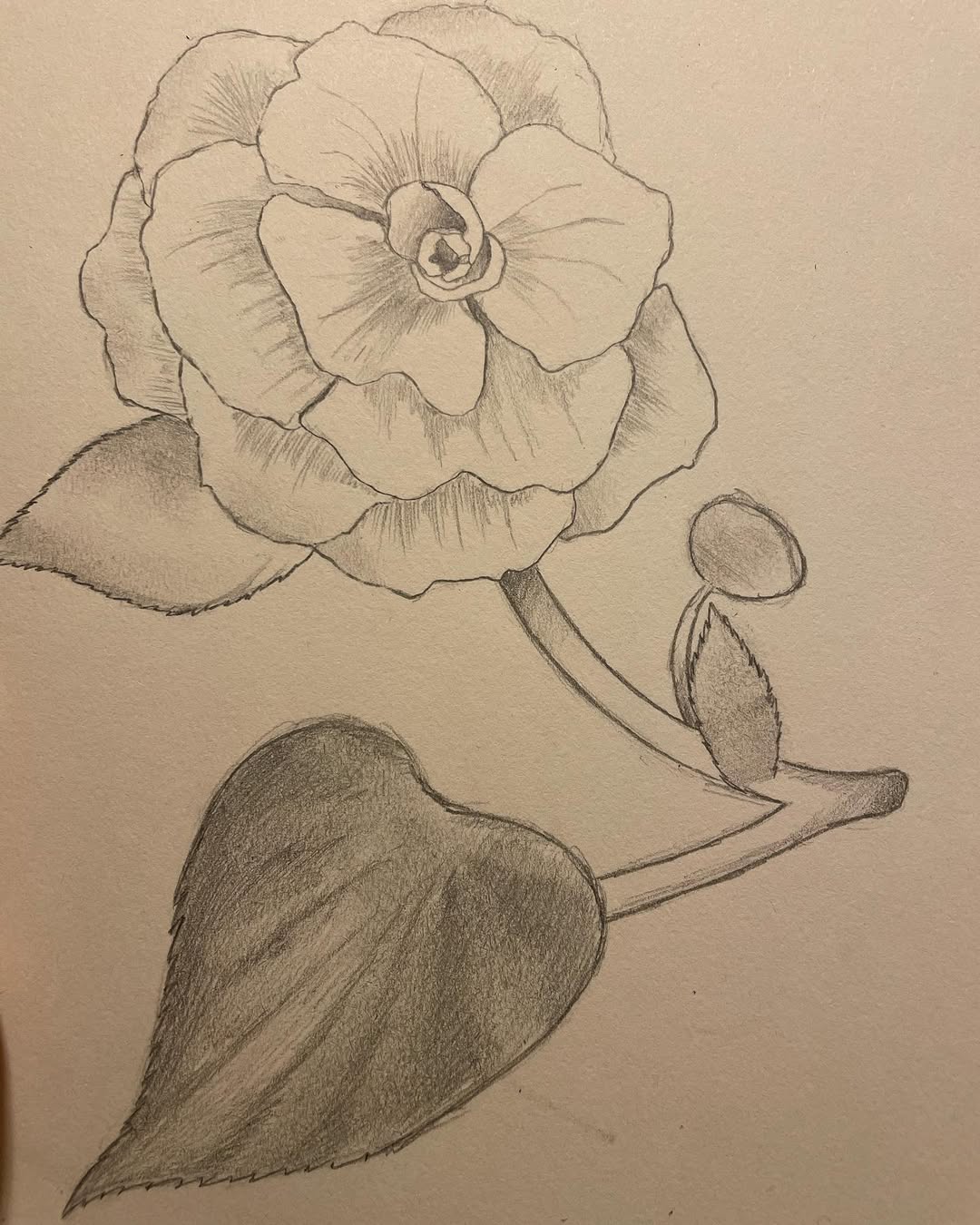
source @rafarod_art
Camellias are often mistaken for roses due to their layered, spiraled petals, but they have a smoother, more rounded shape. To draw a camellia, start with a small oval center, then build layers of softly curved petals in a circular arrangement. The key to a realistic camellia sketch is overlapping the petals slightly and keeping their edges rounded. These flowers look gorgeous in sketchbook spreads, botanical studies, or elegant floral-themed projects.
18. Forget-Me-Not – Tiny Blooms with Delicate Charm
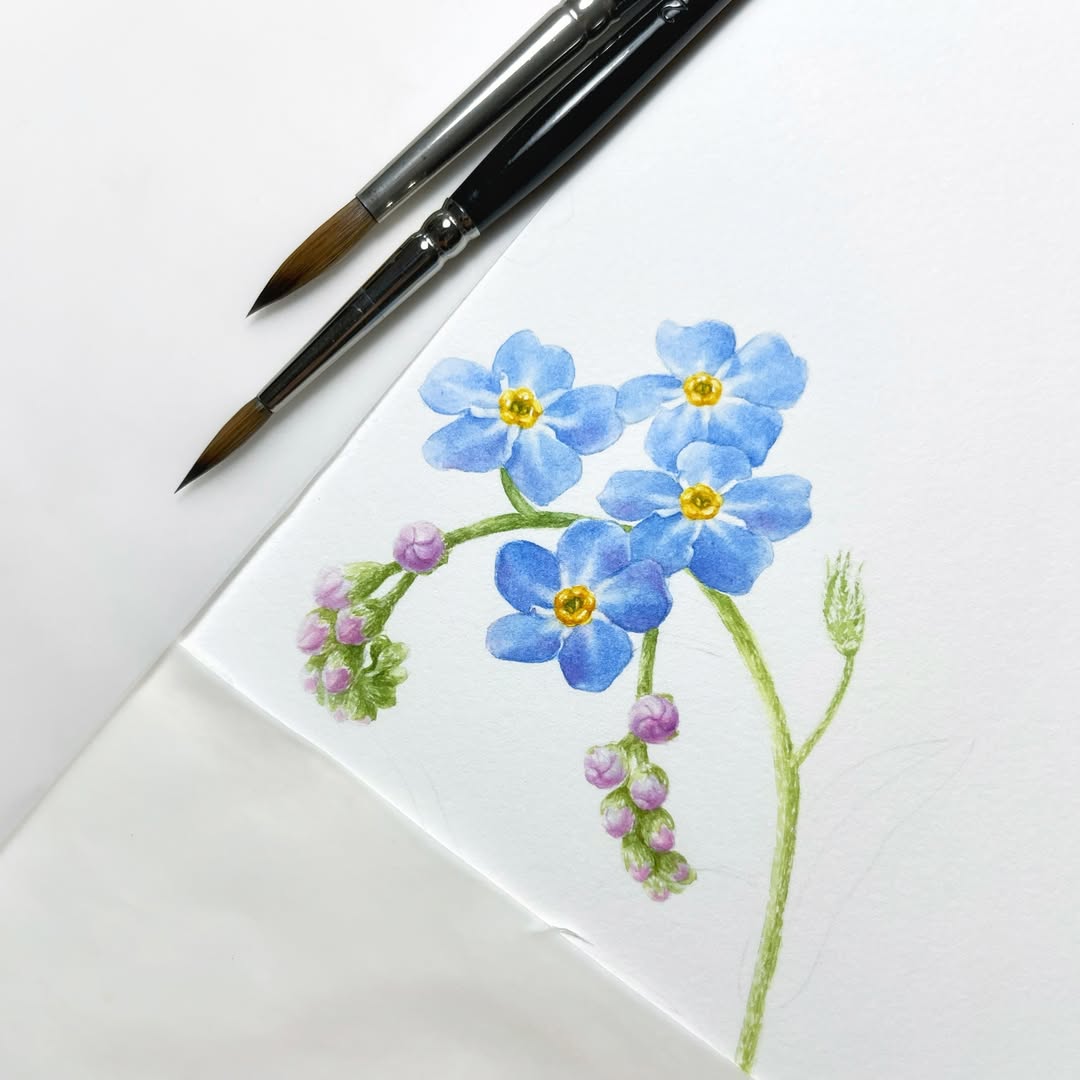
source @inikeke
Forget-me-nots are tiny, five-petaled flowers with a small, round center, often drawn in clusters on thin stems. These delicate flowers are quick and easy to sketch. Begin by drawing a small circle, then add five rounded petals around it, keeping them soft and slightly uneven for a natural look. You can create a simple single bloom or sketch an entire cluster for a whimsical, floral aesthetic. Forget-me-nots are great for doodle-style drawings, journal accents, or soft watercolor sketches.
19. Snowdrop – A Simple and Elegant Hanging Bloom
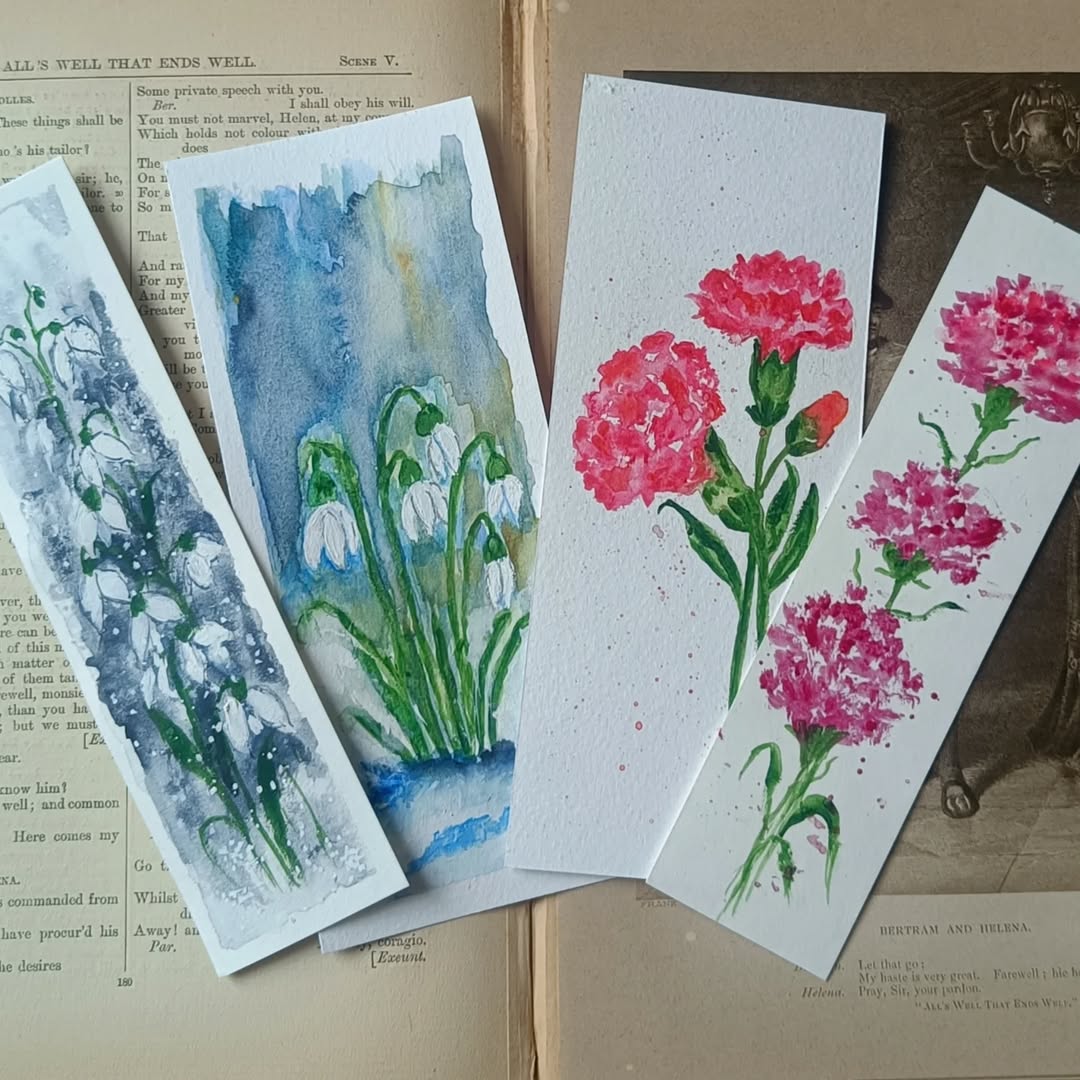
source @tikulli
Snowdrops are small, bell-shaped flowers that hang downward, often associated with winter and early spring. Their clean, simple form makes them one of the easiest flowers to sketch. Start with a gently curved stem, then draw a hanging, teardrop-shaped bloom with slightly curved edges. Snowdrops often have thin, elongated leaves that add balance to the drawing. This elegant flower is a wonderful choice for minimalist floral designs, soft botanical artwork, or greeting card embellishments.
20. Magnolia – A Bold and Elegant Floral Sketch
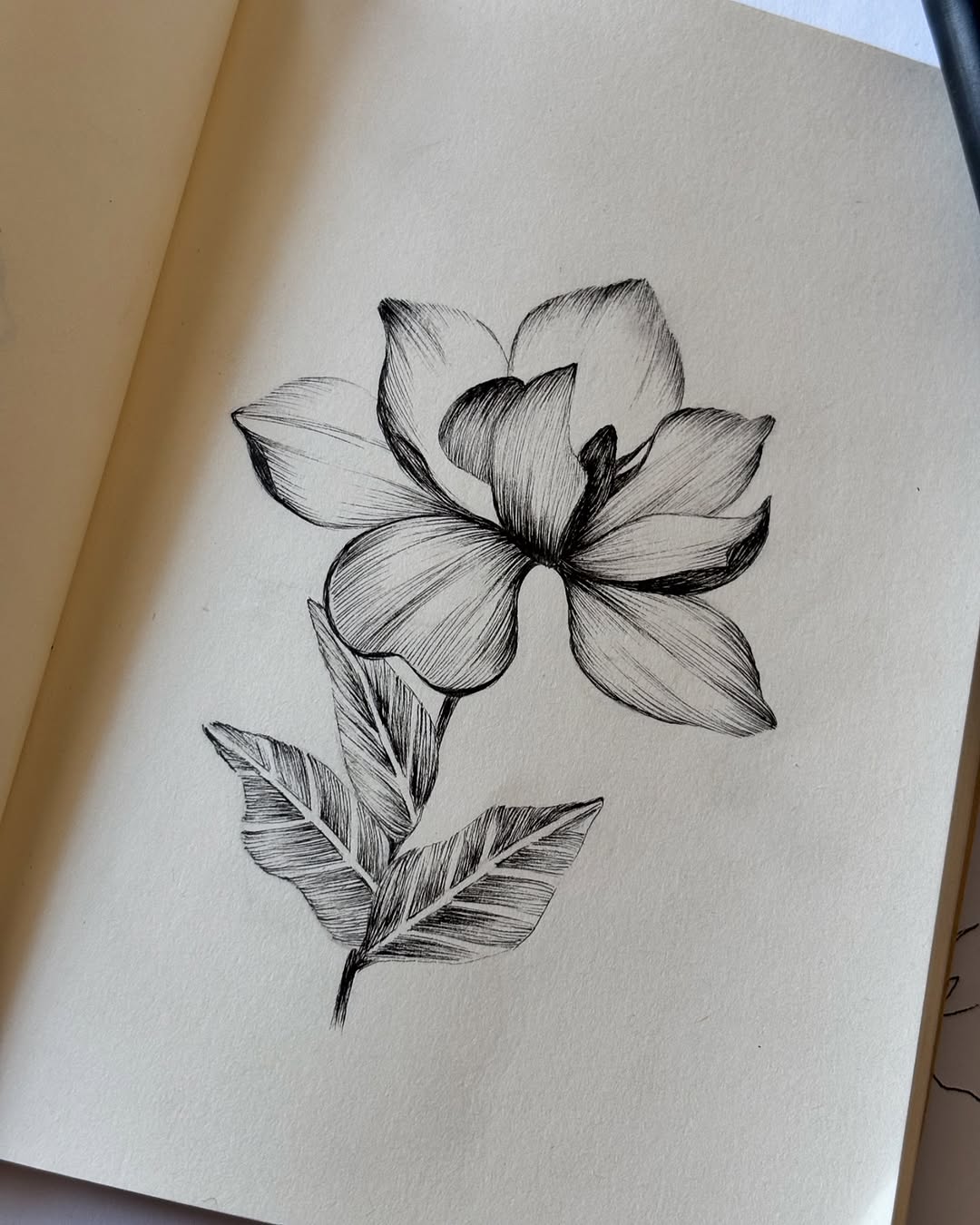
source @flowersbysi
Magnolias are large, bold flowers with broad, slightly curved petals, making them an eye-catching subject for sketching. To draw a magnolia, start with an oval-shaped center, then add thick, gently overlapping petals that radiate outward. Magnolias have a smooth, almost waxy appearance, so keeping your lines clean and simple will make your drawing stand out. These flowers are perfect for elegant botanical illustrations, floral paintings, or even digital artwork.



